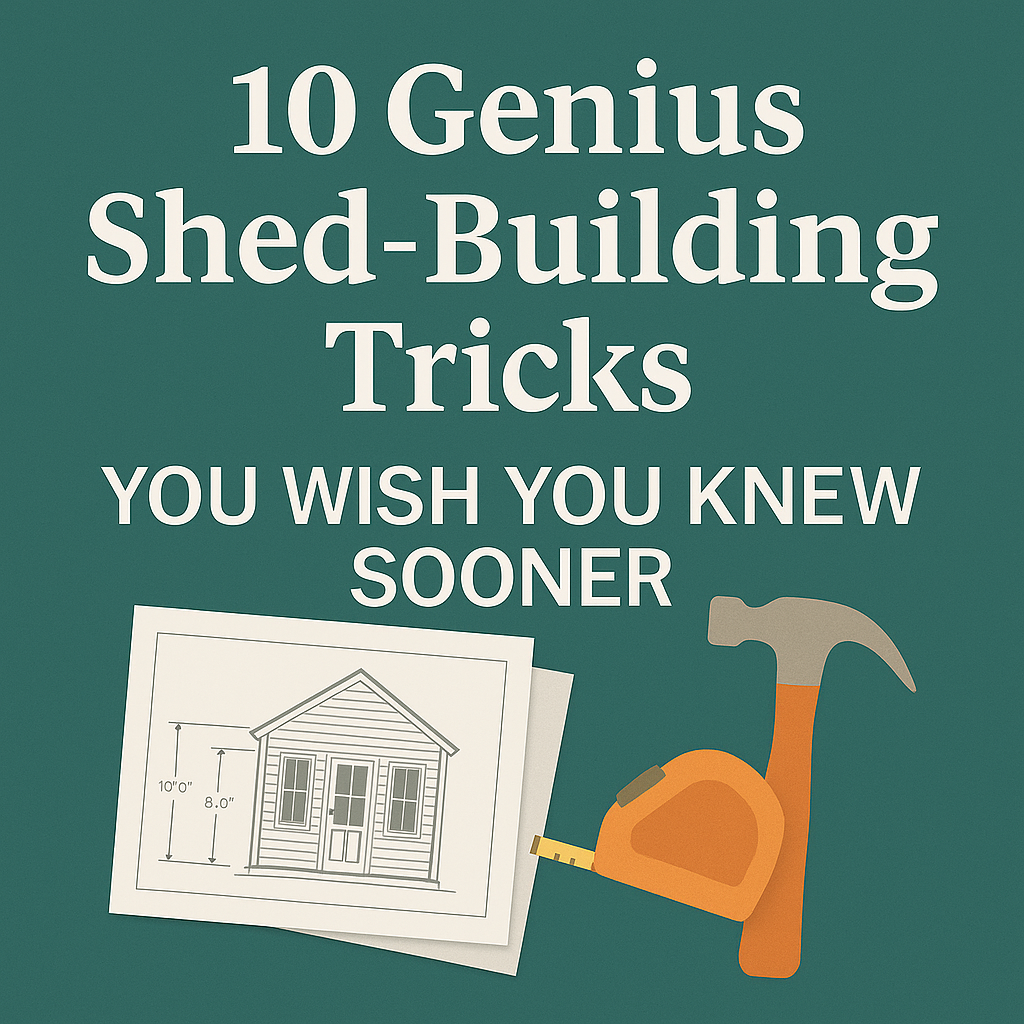10 Genius Shed-Building Tricks You Wish You Knew Sooner

Building a shed might seem simple — until you’re halfway through and realize something doesn’t align, wobble-free walls don’t come easy, and your weekend project is now a week-long saga.
These 10 smart tricks are the kind of time-saving, headache-preventing tips most people only learn after their first (painful) shed build.
Good news: you don’t have to be one of them.
1. Dry-Fit First, Fasten Second
Don’t rush to screw or nail right away. Lay out your pieces first. Clamp them, check for level, spacing, and square angles.
You’ll avoid warped panels, crooked walls, and wasted lumber.
2. Label Every Board Before You Start
Before you even grab the saw, write part names directly onto each board. “Floor Joist A”, “Wall Stud B”, etc.
It’s a simple hack that keeps your build tight, even if you’re stepping away and coming back later.
3. Use a Temporary Floor Template
Lay out floor joists and rim boards like a dry puzzle — no screws yet. This lets you adjust spacing or alignment before it’s too late.
Mark positions with pencil and only fasten once it’s perfect.
4. Pre-Drill Pilot Holes (But Only Where Needed)
Corners, end-grain, and pressure points need pilot holes to prevent splitting. But don’t waste time pre-drilling everything.
Smart use = faster build, still strong.
5. Keep a “Cut Once” Reference Board
Making ten 36-inch cuts? Cut one board perfectly, label it, and use it as a physical template.
You’ll get consistent pieces without remeasuring every time.
6. Don’t Rely on Your Phone for the Plans
Plans on screens = zooming, glare, smudges. On job sites, paper wins.
CraftFrame PDF plans are made to be printed — mark them, fold them, bring them to the saw table.
🛠️ Every plan includes full material lists and labeled parts for quick prep and cutting.
7. Screw First, Nail Second
Want speed and strength? Use screws to align and lock structure, then follow with nails to finish faster.
This hybrid method is faster than you think — and more forgiving.
8. Set Up a Prep Zone
A single folding table or DIY sawhorse station keeps your tools, screws, and cuts off the dirt and organized.
You’ll be twice as efficient (and less cranky).
9. Add Blocking Now — Thank Yourself Later
Add blocking mid-span on floors and rafters before finishing.
It improves strength, stops future sag, and prevents that dreaded bouncy floor feeling.
10. Build Walls Flat on the Ground
Frame your walls horizontally, then lift them into place.
It’s faster, safer, and ensures your frame stays square.
✅ Final Tip: Use Plans Designed to Think for You
You can build without plans. Or you can use ones that anticipate every measurement, angle, and fastener — so you don’t have to guess.
That’s what CraftFrame PDF shed plans are made for:
✔️ Pre-calculated layouts
✔️ Beginner-friendly step-by-step structure
✔️ Material lists, cut charts, diagrams — all in one printable file
